“For once we need to
let go and come together”
Cathy Jenkins, Ferguson Business Owner
December 12, 2016
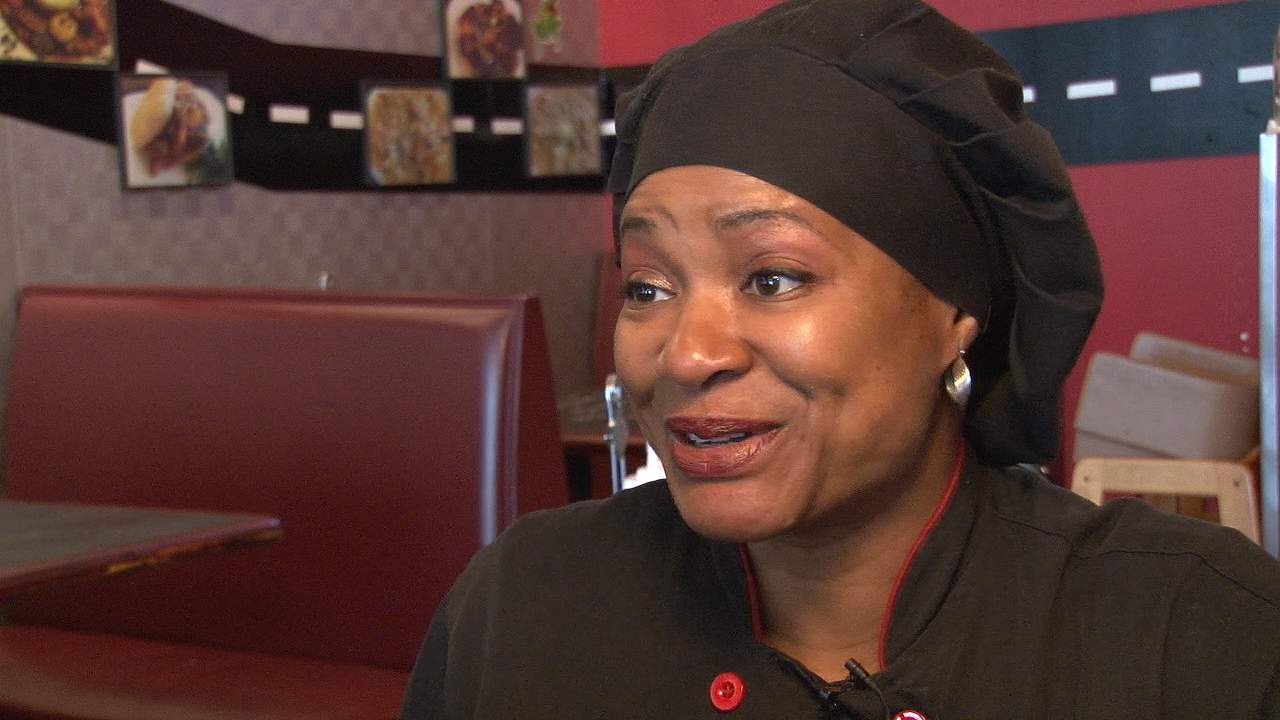
The night the grand jury decision was read in the case of Darren Wilson - the white police officer who shot and killed Michael Brown - Cathy Jenkins was at home with her family watching live coverage on TV. As the community learned that Wilson would not be criminally charged for Brown's death, an angry crowd began gathering outside the police station on South Florissant Road.
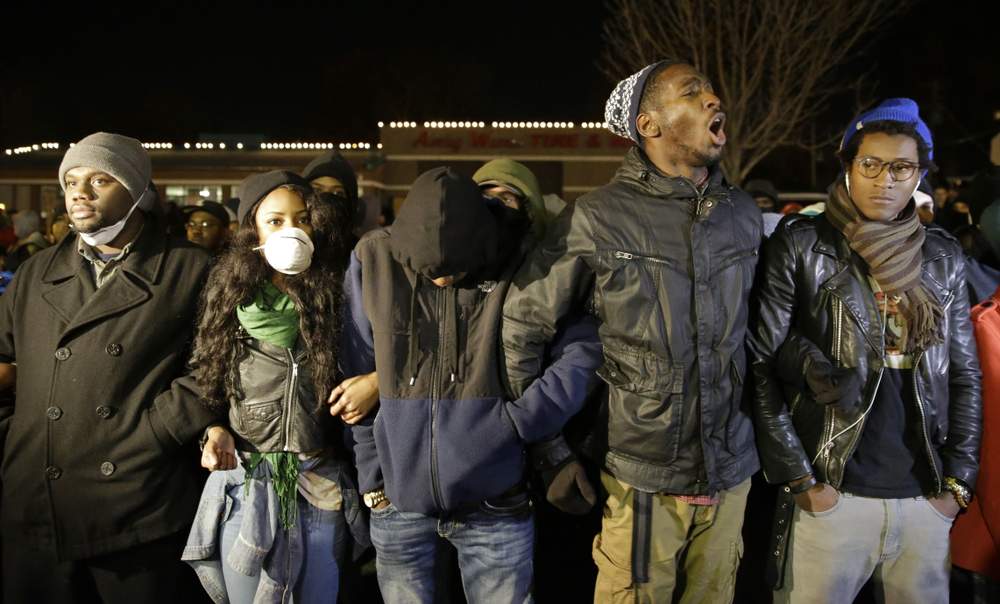
Protestors gather across from Ferguson police department: Photo AP
Her family-owned and -run eatery, Cathy’s Kitchen, was just a few hundred meters down the street.
“That night, when they released the verdict, they told us to leave early, lock the doors and go home because they didn’t know what the outcome would be,” she told us.
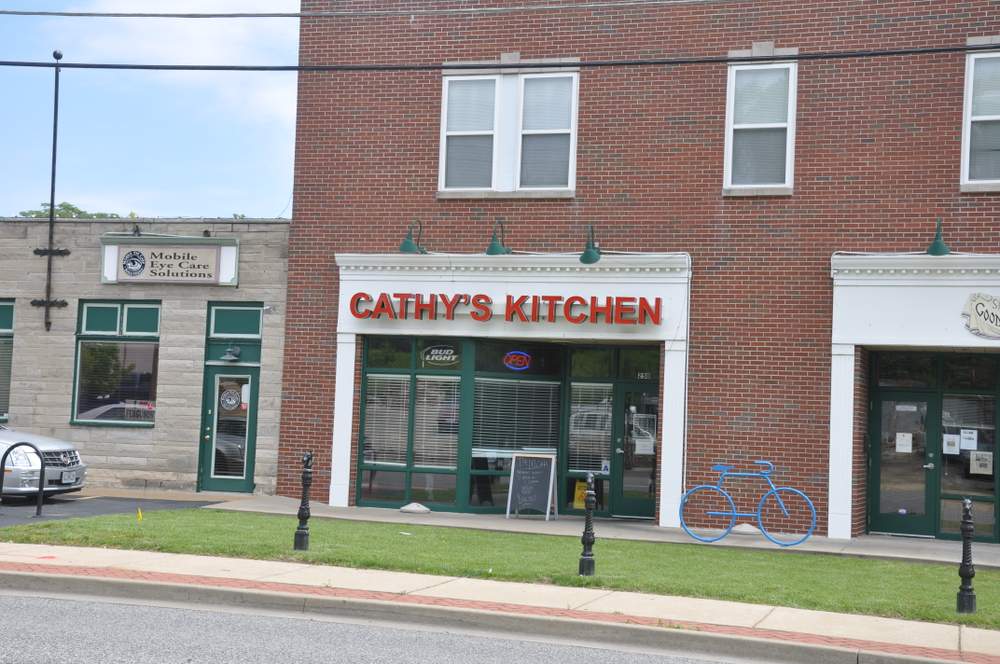
Cathy Jenkins' restaurant: Photo Chris Simkins
Some in the crowd that night in November 2014, were crying. Others were chanting, “F*ck the police!” The crowd surged toward the police station, and was met by officers in full riot gear. Some people threw bottles; the police responded with tear gas.
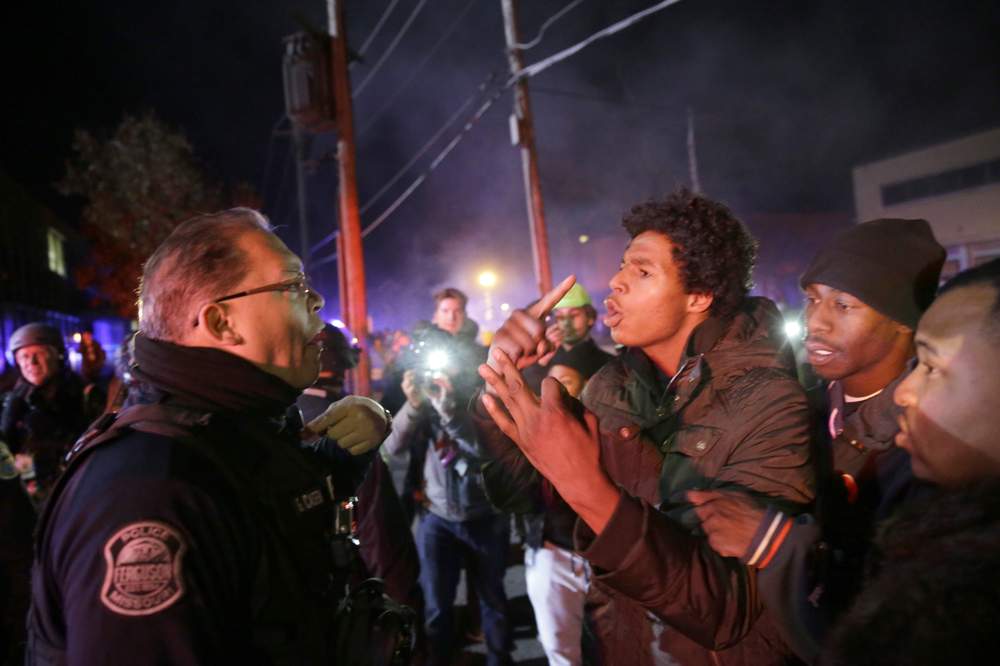
Tempers flair between police and protestors: photo AP
The confrontation grew worse as some in the crowd smashed the window of a police cruiser and overturned the car. Someone threw a table through the front window of Cathy’s Kitchen.
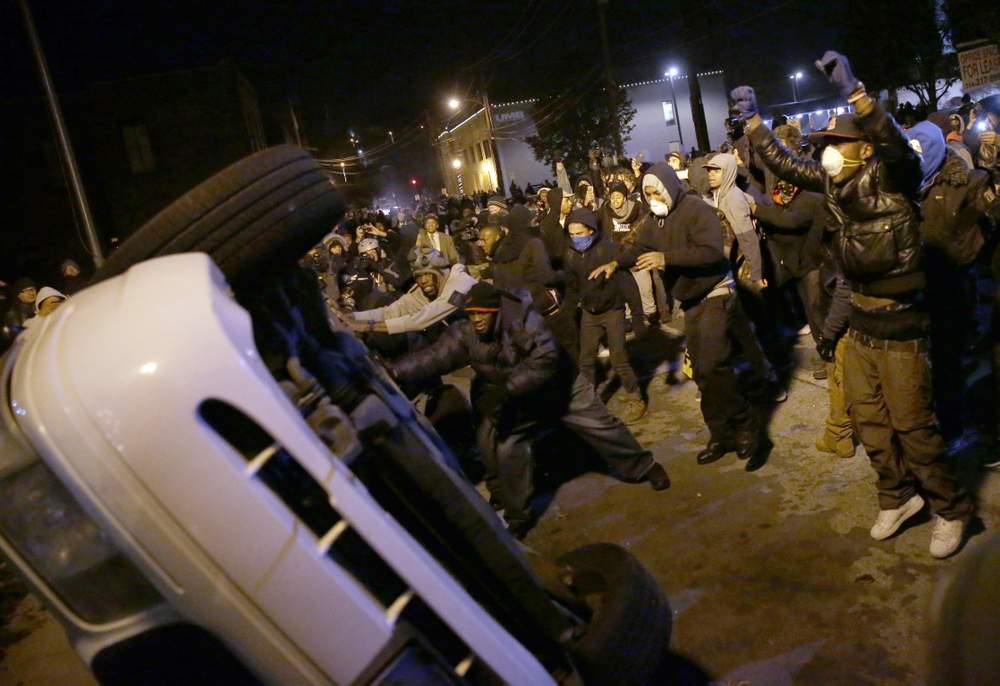
Crowd rolls police car: Photo AP
Jenkins is quick to distinguish between peaceful protesters and those in the crowd she calls criminals. As a prominent African American business owner, she had an active relationship with protesters in the community and would often send them free food and water in the months after Brown's death.
The criminals "knew it would be a Christmas for them in a sense and so they came out and took advantage of the situation and vandalized and looted," she said. "They did a lot of things, but it was not the protesters."
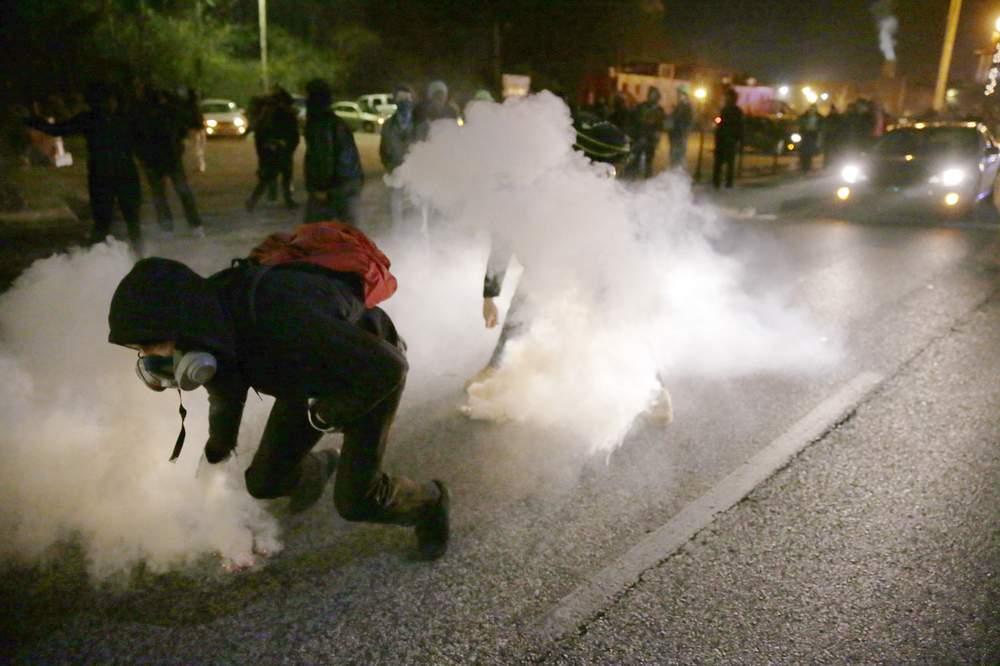
Police deploy tear gas: Photo AP
Jenkins told us her heart sank when she got a phone call telling her the window had been broken. A few minutes later, a video was sent to her on Facebook. It showed some of the protesters locking arms in front of her restaurant protecting it from rioters.
“You could hear every voice and you could hear them screaming, 'No! Not Cathy’s,' you know, 'Not Cathy’s!' And they were literally wrestling people to the ground," she said. "And for me that was monumental in a terrible moment.”
Other than the window, Cathy’s Kitchen survived the riots relatively unscathed, but the last two years have not been easy. She says because of Michael Brown’s death and all the TV coverage of the riots, people were afraid to come to Ferguson after dark.
“They thought people were jumping out of the bushes and bopping people over the head, I guess – you know, but it wasn’t the case" she said. "Life went on for people who live in Ferguson and it wasn’t like what they saw on TV."
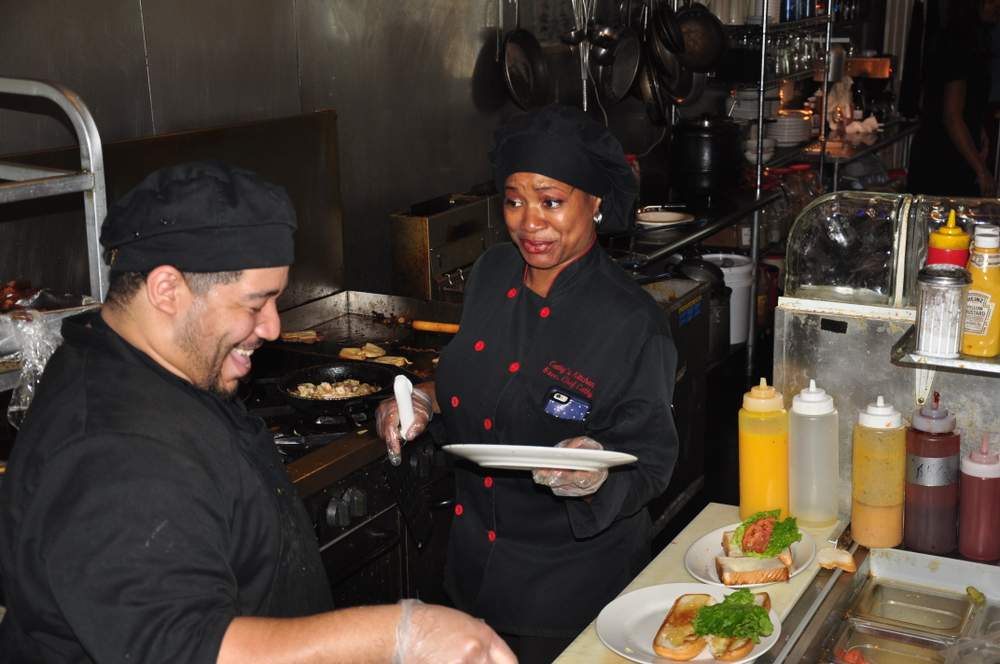
Jenkins, center, and employee working in kitchen: Photo Chris Simkins
According to the regional development association, nearly half of the 500 businesses in Ferguson suffered property damage or lost revenue from the unrest. Some large businesses, like Kmart and the convenience store Quik Trip, simply closed up shop and left.
Jenkins' business plummeted, with almost no one coming after the lunch service. To survive, she had to let most of her employees go.
“What happens is, you start working those hours,” she said.
Slowly, business has returned. For decades, city planners and business owners have been trying to improve the curb appeal of South Florissant Road. Brick sidewalks and antique streetlamps have been installed to match the 19th century architecture of the storefronts that include a micro-brewery, wine bar and bike shop.
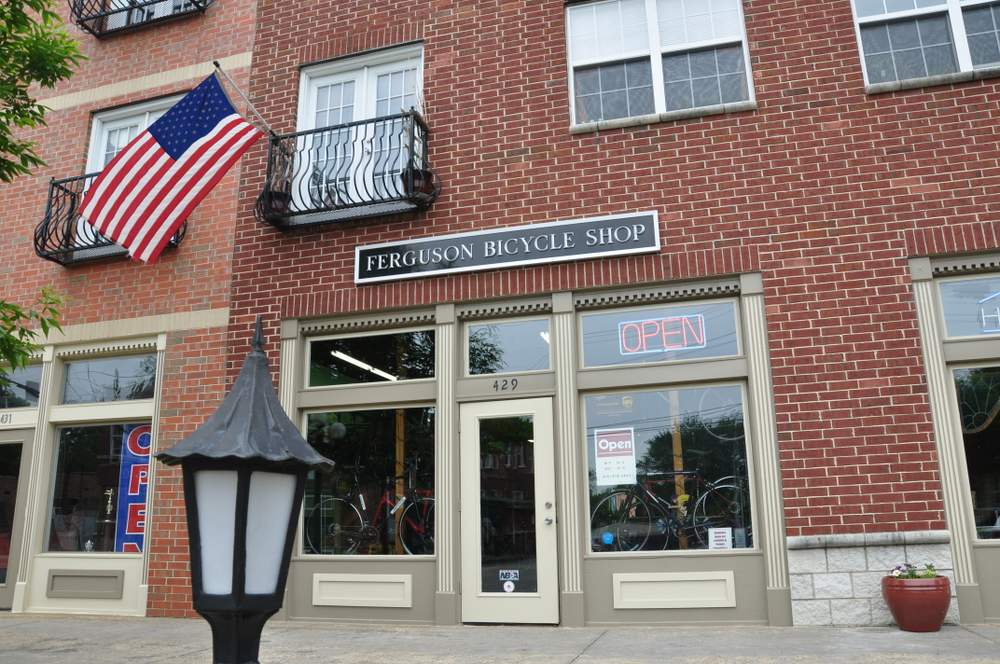
Development along South Florissant Road: Photo Chris Simkins
“Local media has done a lot to cover Ferguson in a positive light,” Jenkins said. "You know, to get people to come to our farmers markets, our restaurants, our runs and trails that we do here. And that has helped.”
A kilometer away on West Florissant Avenue, in the neighborhood were Michael Brown was killed, the strip malls that flank the street still have boarded up businesses and vacant lots dot the landscape. This predominantly African American part of Ferguson, also roiled by unrest, has shown few signs of change since the riots. Plans for redevelopment along West Florissant - the addition of green space and new low-income housing - have met repeated delays.
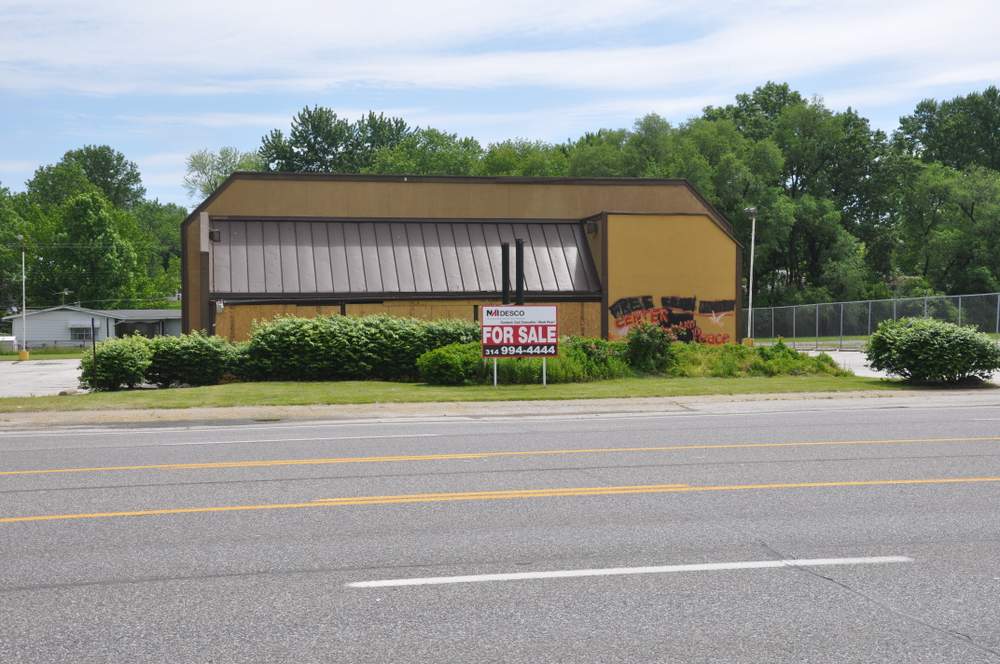
Abandoned buildings along West Florissant Avenue: Photo Chris Simkins
Still, Jenkins is optimistic.
“I hope in my community and town that I live in, I really hope that we allow our hearts to get to the root of things. I mean, not to live in the past. I feel like the past holds us back, you know, that we can’t move forward," she said. "For once, we need to let go and come together.”








